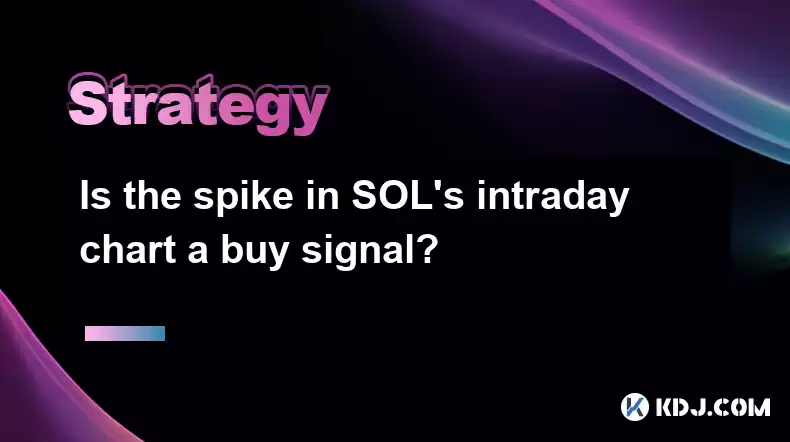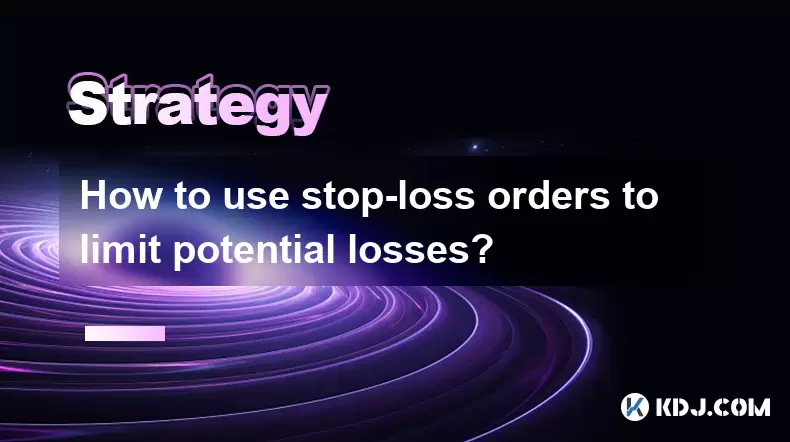-
 Bitcoin
Bitcoin $117500
2.15% -
 Ethereum
Ethereum $3911
6.19% -
 XRP
XRP $3.316
10.79% -
 Tether USDt
Tether USDt $1.000
0.01% -
 BNB
BNB $787.2
2.24% -
 Solana
Solana $175.2
4.15% -
 USDC
USDC $0.9999
0.00% -
 Dogecoin
Dogecoin $0.2225
8.40% -
 TRON
TRON $0.3383
0.28% -
 Cardano
Cardano $0.7868
6.02% -
 Stellar
Stellar $0.4382
9.34% -
 Hyperliquid
Hyperliquid $40.92
7.56% -
 Sui
Sui $3.764
7.63% -
 Chainlink
Chainlink $18.48
10.66% -
 Bitcoin Cash
Bitcoin Cash $582.1
1.88% -
 Hedera
Hedera $0.2601
6.30% -
 Avalanche
Avalanche $23.33
4.94% -
 Ethena USDe
Ethena USDe $1.001
0.02% -
 Litecoin
Litecoin $122.3
2.04% -
 UNUS SED LEO
UNUS SED LEO $8.969
-0.27% -
 Toncoin
Toncoin $3.339
0.86% -
 Shiba Inu
Shiba Inu $0.00001287
4.30% -
 Uniswap
Uniswap $10.43
7.38% -
 Polkadot
Polkadot $3.861
5.08% -
 Dai
Dai $1.000
0.02% -
 Bitget Token
Bitget Token $4.513
3.41% -
 Monero
Monero $267.7
-6.18% -
 Cronos
Cronos $0.1499
4.14% -
 Pepe
Pepe $0.00001110
5.15% -
 Aave
Aave $284.9
8.28%
Is the spike in SOL's intraday chart a buy signal?
Analyzing SOL's intraday chart spike involves technical indicators like moving averages and RSI, fundamental factors, and market sentiment to determine if it's a buy signal.
Apr 19, 2025 at 11:35 am

The recent spike in SOL's intraday chart has caught the attention of many traders and investors within the cryptocurrency circle. Analyzing whether this spike constitutes a buy signal requires a deep dive into various technical and fundamental factors. In this article, we will explore the different aspects that could influence your decision to buy SOL based on its intraday chart movements.
Understanding Intraday Charts
Intraday charts are essential tools for traders who aim to capitalize on short-term price movements. These charts display price action within a single trading day, providing insights into the asset's volatility and potential trend directions. For SOL, the intraday chart can reveal patterns and signals that might not be visible on longer-term charts. When analyzing SOL's intraday chart, it's crucial to look at the volume accompanying the spike, as high volume can validate the price movement.
Technical Analysis of the Spike
Technical analysis is a key component in determining whether a spike in SOL's intraday chart is a buy signal. Key indicators to consider include moving averages, RSI, and volume. If the spike occurs above a significant moving average, such as the 50-day or 200-day moving average, it could indicate strong bullish momentum. Additionally, if the RSI (Relative Strength Index) is not in overbought territory, the spike might suggest a sustainable upward trend. High volume during the spike further supports the notion that the price movement is backed by market interest.
Fundamental Factors Influencing SOL
While technical analysis provides insights into price movements, fundamental factors are equally important in assessing the validity of a buy signal. For SOL, these factors include network performance, developer activity, and ecosystem growth. A spike in the intraday chart could be a response to positive developments within the Solana ecosystem, such as new partnerships or upgrades to the network. Understanding these fundamental drivers can help you determine if the spike is a genuine buy signal or a short-lived anomaly.
Market Sentiment and News Impact
Market sentiment and news can significantly impact SOL's price movements. A spike in the intraday chart might be triggered by positive news or a shift in market sentiment. For instance, if a major cryptocurrency exchange announces the listing of a new SOL-based token, it could lead to increased buying pressure and a subsequent spike. Monitoring news sources and social media platforms can provide valuable insights into the factors driving the spike and help you decide whether it's a good time to buy.
Risk Management and Trading Strategies
When considering a buy signal based on a spike in SOL's intraday chart, implementing effective risk management strategies is crucial. Setting stop-loss orders can help protect your investment from significant losses if the price reverses. Additionally, consider using position sizing to manage your exposure to SOL. If you decide to buy based on the spike, ensure that you have a clear exit strategy in place, whether it's a target price or a time-based exit.
Analyzing Historical Data
Historical data can provide context for the current spike in SOL's intraday chart. Reviewing past price movements and spikes can help you identify patterns and understand how SOL has reacted to similar situations. If historical data shows that SOL has consistently followed through on similar spikes, it could increase your confidence in the current buy signal. Conversely, if past spikes have often led to reversals, you might approach the current spike with more caution.
Conclusion on the Buy Signal
Determining whether the spike in SOL's intraday chart is a buy signal involves a comprehensive analysis of technical indicators, fundamental factors, market sentiment, and historical data. While a spike can be an exciting opportunity, it's essential to approach it with a balanced perspective and a well-thought-out strategy. By considering all these elements, you can make a more informed decision about whether to buy SOL based on its intraday chart movements.
Frequently Asked Questions
Q: How can I differentiate between a genuine buy signal and a false signal on SOL's intraday chart?
A: Differentiating between a genuine and false buy signal requires a multi-faceted approach. Look for confirmation from multiple technical indicators, such as moving averages and RSI. Additionally, consider the volume accompanying the spike; high volume can indicate a more reliable signal. Finally, assess the fundamental factors and market sentiment to ensure the spike is supported by underlying developments.
Q: What are some common pitfalls to avoid when trading SOL based on intraday chart spikes?
A: Common pitfalls include chasing the spike without proper analysis, ignoring risk management, and not considering the broader market context. Always conduct thorough research and use stop-loss orders to manage potential losses. Additionally, avoid over-leveraging your position, as it can amplify both gains and losses.
Q: How can I use historical data to improve my trading decisions on SOL's intraday chart?
A: Historical data can provide valuable insights into SOL's price behavior. Analyze past spikes to identify patterns and understand how SOL has reacted to similar situations. Use this information to set realistic expectations and develop a trading strategy that aligns with historical trends. Additionally, consider using backtesting tools to test your strategy against historical data before applying it to live trading.
Q: What role does market sentiment play in interpreting SOL's intraday chart spikes?
A: Market sentiment can significantly influence SOL's price movements. A positive shift in sentiment can drive buying pressure and lead to a spike in the intraday chart. Conversely, negative sentiment can cause a spike to reverse quickly. Monitoring social media, news, and sentiment analysis tools can help you gauge the market's mood and make more informed trading decisions based on SOL's intraday chart movements.
Disclaimer:info@kdj.com
The information provided is not trading advice. kdj.com does not assume any responsibility for any investments made based on the information provided in this article. Cryptocurrencies are highly volatile and it is highly recommended that you invest with caution after thorough research!
If you believe that the content used on this website infringes your copyright, please contact us immediately (info@kdj.com) and we will delete it promptly.
- Ethereum, Staking Yields, and DeFi Exposure: A New Era for Investors?
- 2025-08-08 15:10:12
- Unilabs Pumps MIA, Binance Coin Bouncing Back, and Ethereum's Bearish Blues
- 2025-08-08 15:10:12
- Ethereum's Wyckoff Markup and Market Rotation: A New Era?
- 2025-08-08 15:30:12
- Ethereum, Vitalik Buterin, and the Overleveraged Game: A Balancing Act
- 2025-08-08 15:30:12
- Ethereum, Corporate Treasuries, and Vitalik Buterin: A New Era for ETH?
- 2025-08-08 15:36:08
- BNB Price, Binance Staking, and SEC Concerns: What's the Deal?
- 2025-08-08 15:36:08
Related knowledge

How to use stop-loss orders to limit potential losses?
Aug 08,2025 at 02:01pm
Understanding Stop-Loss Orders in Cryptocurrency TradingA stop-loss order is a risk management tool used by traders to automatically sell a cryptocurr...

How to read cryptocurrency charts and use technical analysis?
Aug 08,2025 at 11:08am
Understanding the Basics of Cryptocurrency ChartsCryptocurrency charts are graphical representations of price movements over time. These charts are es...

How to avoid common crypto investment mistakes?
Jul 13,2025 at 01:35am
Understanding the Risks of Crypto InvestmentInvesting in cryptocurrency can be highly rewarding, but it also comes with significant risks. One of the ...

What is a long-short crypto strategy?
Jul 15,2025 at 10:56am
Understanding the Basics of a Long-Short Crypto StrategyA long-short crypto strategy is an investment approach where traders simultaneously take long ...

What is a long-short crypto strategy?
Jul 11,2025 at 01:28pm
Understanding the Basics of Long-Short Crypto StrategyA long-short crypto strategy is an investment approach where traders take both long and short po...

How to use the RSI indicator for crypto?
Jul 12,2025 at 03:56pm
Understanding the RSI Indicator in Cryptocurrency TradingThe Relative Strength Index (RSI) is a momentum oscillator used to measure the speed and chan...

How to use stop-loss orders to limit potential losses?
Aug 08,2025 at 02:01pm
Understanding Stop-Loss Orders in Cryptocurrency TradingA stop-loss order is a risk management tool used by traders to automatically sell a cryptocurr...

How to read cryptocurrency charts and use technical analysis?
Aug 08,2025 at 11:08am
Understanding the Basics of Cryptocurrency ChartsCryptocurrency charts are graphical representations of price movements over time. These charts are es...

How to avoid common crypto investment mistakes?
Jul 13,2025 at 01:35am
Understanding the Risks of Crypto InvestmentInvesting in cryptocurrency can be highly rewarding, but it also comes with significant risks. One of the ...

What is a long-short crypto strategy?
Jul 15,2025 at 10:56am
Understanding the Basics of a Long-Short Crypto StrategyA long-short crypto strategy is an investment approach where traders simultaneously take long ...

What is a long-short crypto strategy?
Jul 11,2025 at 01:28pm
Understanding the Basics of Long-Short Crypto StrategyA long-short crypto strategy is an investment approach where traders take both long and short po...

How to use the RSI indicator for crypto?
Jul 12,2025 at 03:56pm
Understanding the RSI Indicator in Cryptocurrency TradingThe Relative Strength Index (RSI) is a momentum oscillator used to measure the speed and chan...
See all articles

























































































